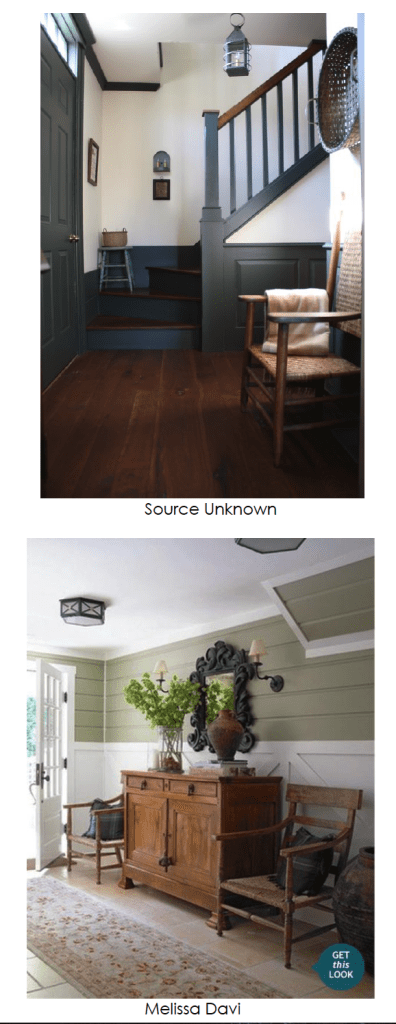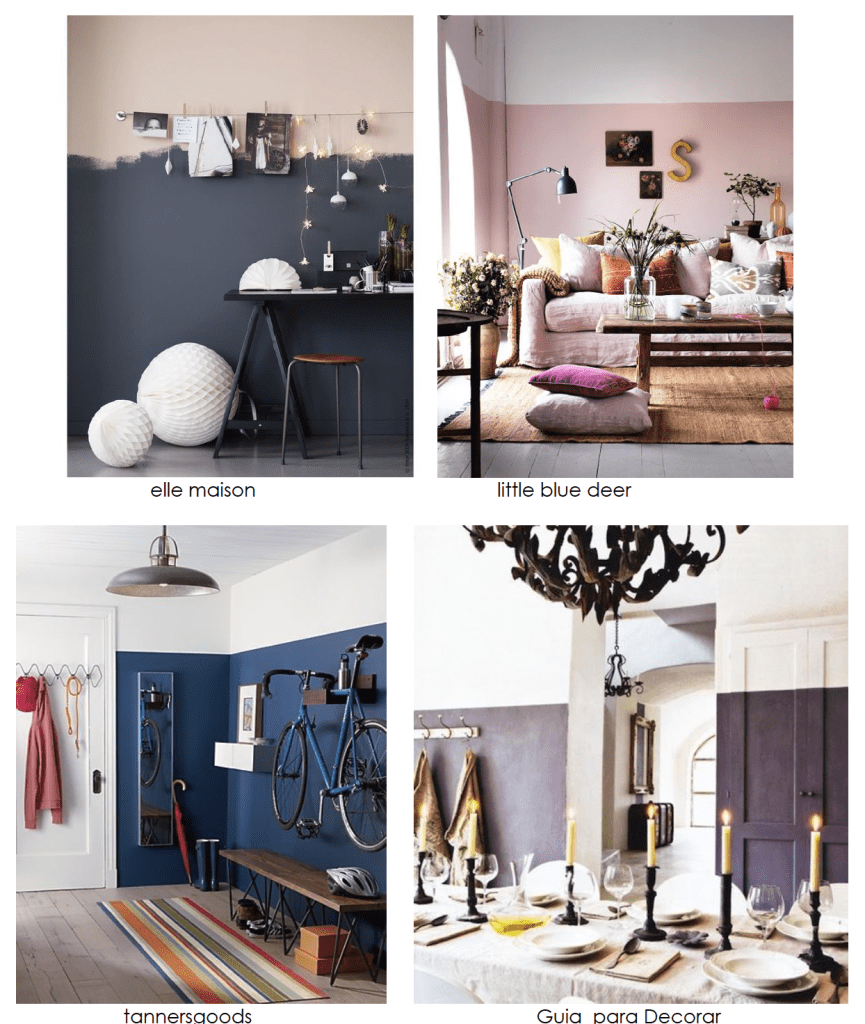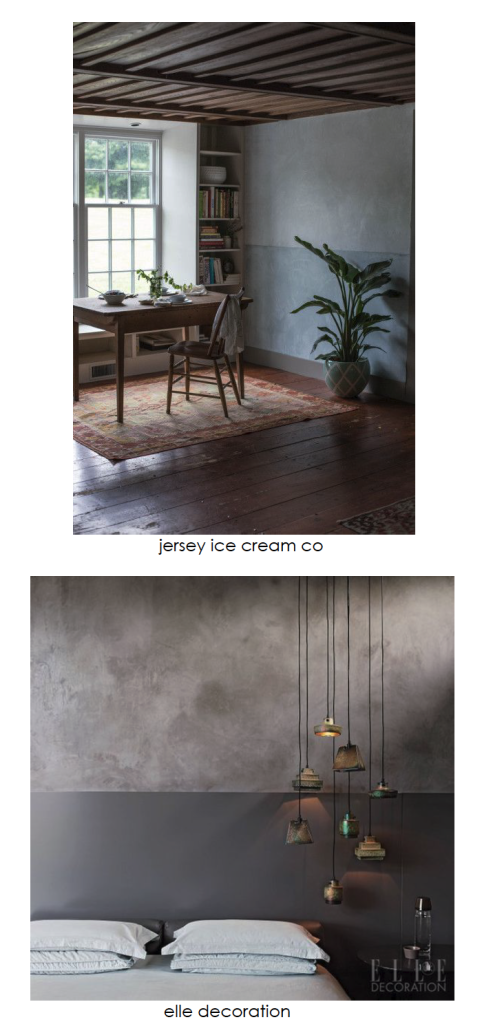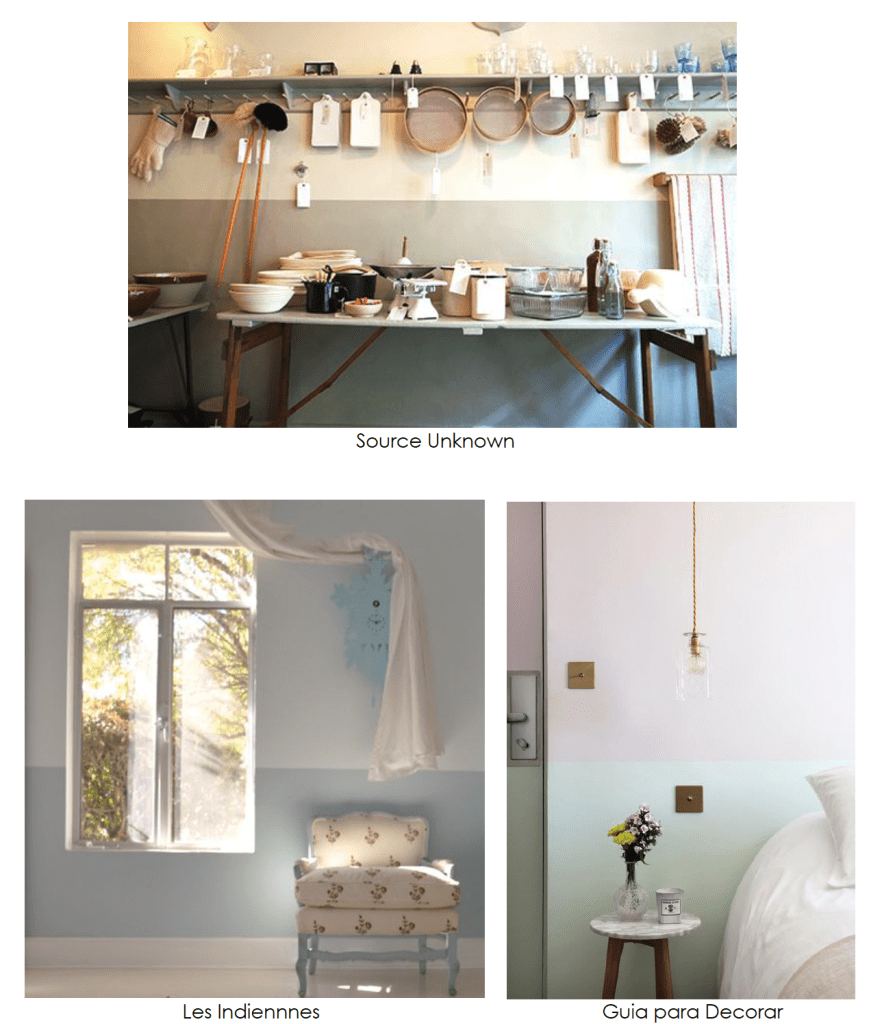Two toned painted walls add color to a room without adding chaos. When the walls are divided horizontally, a graphic element is added to the design of the space. Painting walls with two colors creates a dynamism where the final affect is much more than the sum of the parts. When a client is open to it I’m happy to suggest this approach when I’m interior paint color consulting.
We’re accustomed to seeing two colors with wainscoting, of course. Wainscoting is a traditional room treatment which adds millwork to the lower portion of the walls. Wainscoting is often painted white while the sheetrock above is painted another color. Sometimes wainscoting is left as a wood tone. In the 18th century, the style of panelling changed from a floor-to-ceiling covering to one in which only the lower part of the wall was covered. Hence wainscot or wainscoting became a panelling style applied to the lower 3 to 5 ft of an interior wall, below the dado or chair rail, and above the baseboard or skirting board. The original purpose of wainscoting was to cover the lower part of walls, which, in houses constructed with poor or non-existent damp-proof courses, were often affected by rising dampness. Its purpose is now decorative.
 Often we see chair (dado) rails in the dining room and when we do there’s an even chance the walls will be painted a different color above and below. The presence of the rail seems to give home owners the confidence to venture towards a two toned wall.
Often we see chair (dado) rails in the dining room and when we do there’s an even chance the walls will be painted a different color above and below. The presence of the rail seems to give home owners the confidence to venture towards a two toned wall.

Amy Krane Color
But why not go for it, anyway? All it takes is some painting tape to create a sharp, clean divider between the upper and lower colors (or not!). There are many ways to approach a two toned wall.
Certainly using white as the upper color produces a clean, crisp look. Paired with black or navy blue below, it creates a powerful affect. It’s best to place the darker, weightier color on the bottom half of the wall.

The human eye ( brain) is accustomed to the dark earth at the bottom of our field of vision so it’s a natural choice. Wainscoting typically comes to 32″ to 36″ above the floor so that’s a natural point to split colors on a two tone wall. But there is lots of leeway to divide at another point, higher or lower. When ceilings are very high and one wants to create a cozier, more human scale to a room, a two tone wall divided up high brings the ceiling down.

What if you want a faux finish – some kind of artistic paint treatment? Does that mean you can’t have two toned walls? No! Even with an affect like Venetian plaster, a two toned wall is fabulous and placing the plaster affect on only half the wall is a great choice. Two toned walls are also a way to tamper the boldness of one bright color. Many colors are too high in chroma, too saturated, to cover all four walls but paired with a more subdued color like a neutral or black it’s suddenly doable.
 Then again, mixing two highly divergent colors on one wall can be very exciting and will create a powerful dynamic. This is not for the faint of heart.
Then again, mixing two highly divergent colors on one wall can be very exciting and will create a powerful dynamic. This is not for the faint of heart.
 But fear not, those of you who can’t fathom mixing coral and dusty rose on the same wall, using soothing pales is just as successful and extremely satisfying.
But fear not, those of you who can’t fathom mixing coral and dusty rose on the same wall, using soothing pales is just as successful and extremely satisfying.


